Concrete
Plain concrete is made by mixing cements, fine and coarse aggregate, water and admixtures. The common practice of mixing the concrete component is based on ratio 1:2:4 proportion of cement: sand: aggregate. When reinforcing steel is placed in the forms and wet concrete mix is poured around it, the final solidified mass becomes reinforced concrete.
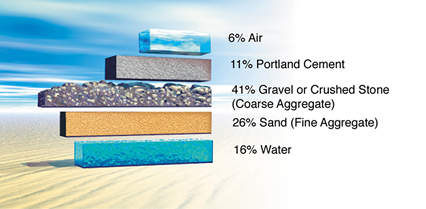
Cement
Cement shall be ordinary Portland Cement, rapid hardening Portland Cement (complying with SS 26), sulphate resisting Portland Cement (to BS 4027), supersulphated cement (to BS 4248) or low heat Portland blast-furnace cement (to BS4246).
According to ASTM C 150, there are 4 types of Portland cement:
Typical composition of Portland Cement:
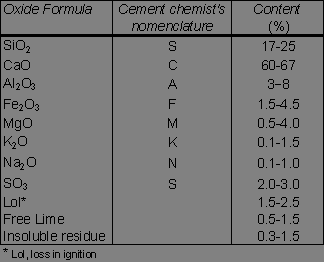
Cements replacement
For technical and economic reason, three types of cementitious materials can be added into concrete mix to replace part of cement fraction: Ground granulated blast-furnace slag, Pulverized-fuel ash (PFA), and Silica Fume.
The selection of type of cement replacement affects the physical characteristic of the final product.
Properties of different types of cements divided into 4 grades from grading zone I to grading zone IV as given in the table below:

Sand
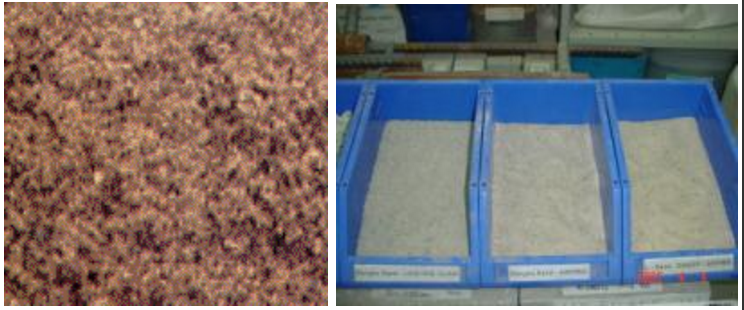
The proportion of sand to total aggregate depends on the grading of the sand as indicated by the proportion of sand passing the 600 µm sieve. It also depends on the maximum aggregates size, the workability, and the free-water/ cement ratio.
Based on mineralogical composition, sand is divided into quartz, feldspar and carbonaceous varieties. Depending upon its size, sand is classified as coarse sand (fineness modulus/ F.M: 2.90-3.20), medium sand (F.M: 2.60-2.90) and fine sand (F.M: 2.20-2.60).
Based on particle size distribution fine aggregate have been

Aggregates
Aggregates may be classified into natural aggregate (i.e. crushed igneous, sedimentary, metamorphic rock, gravel and sand) and artificial aggregate (i.e. broken brick and blast furnace slag).
Since aggregate occupies about 75% of the total volume of concrete, its properties have a definite influence on the behavior of hardened concrete such as durability, strength, density, shrinkage, and thermal properties.
Aggregates are usually graded by size and a proper mix has specified percentage of both fine and coarse aggregate. In the BSI, fine aggregates are those which particles mainly pass a 5.0mm BS 410: 1983 test sieve and do not contain more coarse material than permitted for grading specified. Coarse aggregates are those which most particles are retained on a 5.0mm BS 410:1983 test sieve with no finer material than permitted for various sizes specified. In the ASTM system, 4.75mm (no. 4 sieve) is the nominal dividing size of coarse and fine aggregate.
Coarse aggregate can be:
- Gravel:
- Uncrushed gravel, which results from the natural disintegration of rock
- Crushed gravel
- Partially crushed gravel
- Crushed rock
- Blended coarse aggregate produced by the controlled blending of gravel and crushed rock.
Fine aggregate can be:
Sand:
- Uncrushed sand
- Partially crushed sand
- Crushed gravel fines
- Crushed rock fines
- Blended fine aggregate
Beside fine and coarse aggregate, there is lightweight aggregate. This type of aggregate has apparent specific gravity significantly less than the normal fine and coarse aggregates. They ranged from extremely lightweight types used in insulating and non-structural concrete, to expanded shales, clays and slates used in structural concrete.
Admixtures

In addition to concrete mix, there is another material known as admixture. Admixture may be used to modify the properties of the concrete to make it better serve its intended use or for better economic reason.
The main types of admixtures are: air-entraining agent, mortar plasticizers, water-reducing agents and concrete plasticizer, superplasticizers, accelerator, corrosion inhibitors, retarders and permeability reducers.
Water
Water is required for hydration, which acts as lubricant between coarse and fine aggregates and produces a workable and economical concrete.
The water/ cement ratio (w/c) is one of the major factors influencing the strength of concrete. For proper workability the w/c ratio varies from 0.4-0.6. However, maximum strength is derived at w/c=0.4. The concrete compacted by vibrator has higher strength, even up to w/c=0.3. At w/c ratio more than 0.4, the expansion of cement on hydration is insufficient to occupy the space previously filled with water. Thus, porosity increases and strength decreases.
Almost any natural potable water that has no pronounced taste or odour is acceptable for the concrete mix. Many sources of water unsuitable for drinking may also be used. However, the level of impurities might affect the setting time of cement.
Reinforcement

Steel reinforcement may consist of steel bars, welded wire fabric, or wires. For normal reinforced concrete the basic type of bar available in Singapore and shall comply with SS 2: 1999 are:
- Grade 250: Mild Steel bars in plain round form (R 10, R 6, R 13)
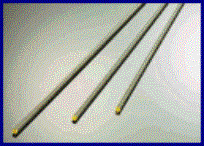
- Grade 460: High Tensile bars in ribbed/ deformed profile (T10, T13, T16, T20, T25, T28, T32, T40)
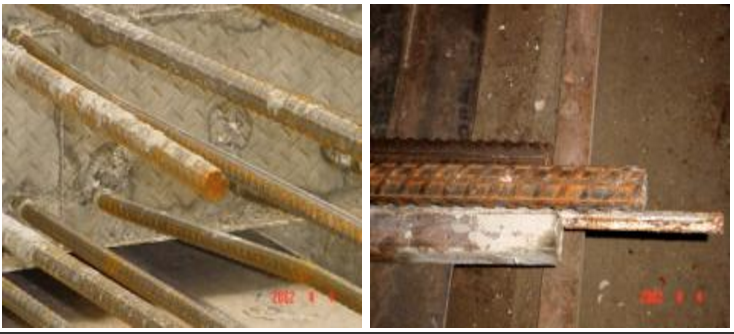
- Grade 485: Welded Mesh reinforcement (for square meshes i.e. A6, A7, A10, and rectangular meshes i.e. B12, B111, B10, etc). Depending on the design load, the spacing ranges from 100 to 200mm.
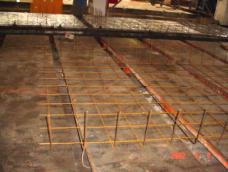
The cross sectional area of various bar sizes:
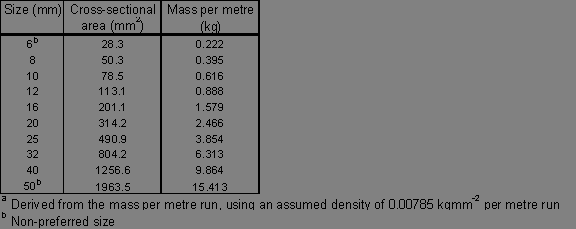
Herewith are the properties of various reinforcement bars:

References
[1] Clive Briffett [Edited, 1994], Building Maintenance Technology in Tropical Climates, Singapore University Press.
[2] HDB Specifications
[3] http://www.portcement.org/cb/index.asp
[4] BS 410-1:2000 Test sieves. Technical requirements and testing. Test sieves of metal wire cloth.
[5] BS 410-2:2000 Test sieves. Technical requirements and testing. Test sieves of perforated metal plate.
SS 26: 2000 Ordinary Portland cement
BS 4246: 1991Specification for high slag blastfurnace cement
BS 4027: 1996 Specification for sulfate-resisting Portland cement
BS 4248:1974 Specification for supersulphated cement
ASTM C 150: 2002a Standard Specification for Portland Cement